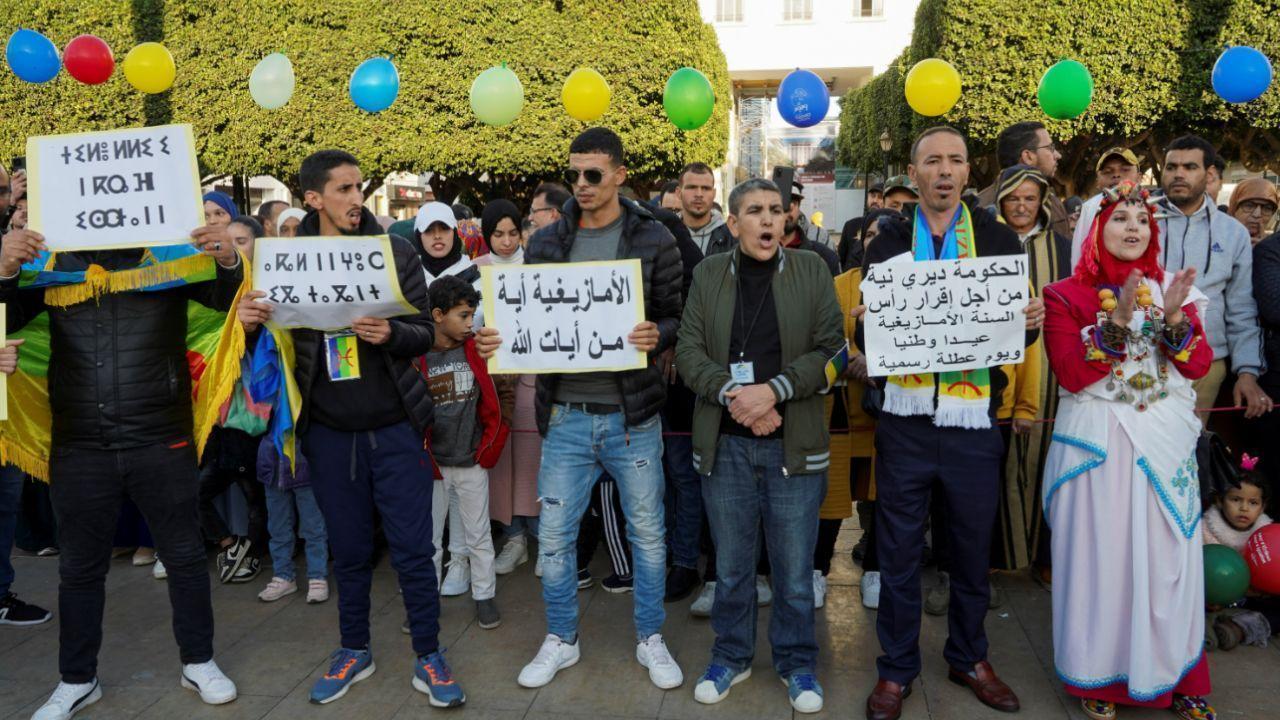
Post by : Priya
Photo:Reuters
The sound of chalk scratching out words on blackboards in classrooms across North Africa is now starting to carry a deeper meaning. More and more, those words belong to a language that long existed in the shadows of modern education — Tamazight, more commonly known as the Berber language. After decades of being excluded from official institutions, the language is finding its way back into primary schools, high schools, and universities across Morocco, Algeria, Tunisia, and even parts of Libya. This revival is more than a curriculum change; it is a cultural reawakening.
The Deep Roots of the Berber Language
The Berber language, or Tamazight, is not new. It is one of the oldest languages in the world, spoken for more than 2,000 years. The Berber people — or Imazighen as they call themselves, meaning “free people” — have lived in North Africa long before the arrival of Arabs, Europeans, or the formation of modern national borders. From the Atlas Mountains to the Sahara Desert, Berber-speaking communities have kept their traditions alive through songs, poetry, storytelling, and community life.
Tamazight is not one single language but a family of closely related dialects. These include Tachelhit, Tarifit, and Tamahaq, among others. Though they may sound different, they share common grammar, sounds, and heritage. Tamazight was once written using the ancient Tifinagh script, which is still used today in a modern form, especially in Morocco.
Yet, despite this long and rich history, the language faced serious threats over the past century — mainly due to colonialism, modernization, and the push for Arabization after independence in many North African countries.
How the Language Was Silenced
When European colonial powers — especially France — ruled over North African nations during the 19th and 20th centuries, they brought with them a new educational system. French became the language of instruction, of government, and of power. Indigenous languages, including Tamazight, were seen as obstacles to “progress.” Many Berber children were not allowed to speak their mother tongue in schools, and doing so could even result in punishment.
After independence, newly formed governments in countries like Algeria, Morocco, and Tunisia wanted to build strong national identities. They promoted Arabic as the official language, linking it to Islam and national unity. Again, Berber was left behind.
This policy, often called Arabization, aimed to replace French with Arabic — but it also ignored or actively suppressed Berber languages. Tamazight was not taught in schools, not used in official documents, and not broadcast on public television. As a result, generations of Berber-speaking children were educated in languages that were not their own.
This led to a slow erosion of the language. Some parents stopped speaking Tamazight at home, thinking it had no value for their children’s futures. Others held on to it in secret, passing it down as best they could. The language survived — but only barely.
The Fight for Recognition
In the 1980s and 1990s, Berber activists began to push back. Across North Africa, but especially in Algeria and Morocco, cultural movements formed to protect the Amazigh identity. These groups demanded not just cultural respect, but constitutional recognition of their language.
In Algeria, the situation became especially tense. Protests broke out in the Kabylie region — a Berber-majority area — over the lack of Tamazight education and the broader erasure of Amazigh identity. In 2001, during what came to be called the Black Spring, dozens of young people were killed during protests. This tragic event forced the government to start listening. In 2002, Algeria officially recognized Tamazight as a “national language,” and in 2016, it became an “official language” alongside Arabic.
In Morocco, the changes came through slower political reforms. The 2011 constitution — passed after the Arab Spring — recognized Tamazight as an official language. This opened the door for Tamazight to be taught in schools, used in government services, and promoted in media.
Tamazight Enters the Classroom
Today, more than a decade after these changes, the results are finally becoming visible in classrooms. In Morocco, over 4 million students are now learning Tamazight in primary school. The goal is to make it available in all schools by 2030. The Ministry of Education has hired thousands of teachers trained specifically in Tamazight instruction and printed thousands of textbooks in the language.
In Algeria, Tamazight is now taught in more than 30 provinces. The government has established a High Council of the Amazigh Language to oversee policy and ensure progress. Universities now offer degrees in Tamazight studies, and national TV channels broadcast news and cultural programs in the language.
Even in Libya and Tunisia, where Tamazight speakers are fewer and policies are less developed, efforts are being made to support the language. In Libya, after the fall of Gaddafi, Amazigh communities started their own schools and radio stations to promote their heritage. In Tunisia, Berber activists are working to raise awareness and revive their identity through music and cultural events.
Challenges and Criticisms
Despite the positive steps, the road ahead is not easy. Several major challenges remain:
Lack of Teachers: There are not enough qualified Tamazight teachers to meet demand. Many schools, especially in rural areas, do not have the staff or resources to offer language classes.
Uneven Implementation: Some provinces or regions are more committed to the language revival than others. In some areas, the policy remains on paper but is not applied in reality.
Public Opinion: While many families support Tamazight education, others worry that it may reduce their children’s ability to learn Arabic, French, or English — languages that are seen as more useful for jobs.
Political Will: Governments often make promises about language rights, but budget cuts or changes in leadership can slow progress. Some critics fear that official support is more symbolic than serious.
Still, many experts say that progress is real — and that once Tamazight is firmly included in the national curriculum, it will be hard to remove again.
Why This Revival Matters
The return of Tamazight to schools is not just about language — it’s about identity, justice, and belonging.
For the Amazigh people, seeing their children learn the language of their ancestors is a powerful symbol. It means their culture is respected, their voice is heard, and their history is part of the national story.
For North African nations, embracing Tamazight shows a willingness to accept diversity and build unity through inclusion, not erasure. It means recognizing that being Algerian, Moroccan, or Libyan does not have to mean being Arab — it can also mean being Amazigh, or both.
And for the world, this revival offers a lesson in how endangered languages can be brought back to life — not through force, but through education, respect, and persistence.
The Youth Are Leading the Way
One of the most encouraging signs of the Tamazight revival is the energy of the youth. Young people across North Africa are learning the language — not just in school, but on social media, in music, and through art.
On platforms like YouTube, Instagram, and TikTok, young Amazigh creators are sharing poems, songs, history lessons, and comedy sketches in Tamazight. In doing so, they are making the language cool, modern, and relevant.
Music festivals celebrating Amazigh identity are drawing large crowds. Tamazight rappers and singers are gaining fans beyond North Africa. Youth groups are organizing summer camps, language classes, and digital storytelling workshops in Tamazight.
This new generation is not just preserving their heritage — they are reinventing it for the future.



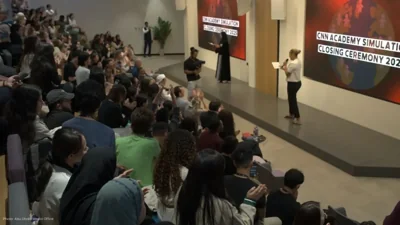




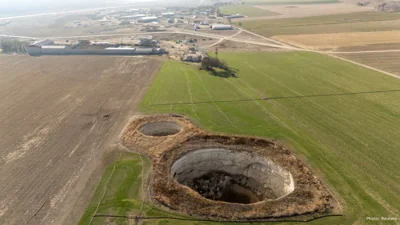

Dhurandhar Surpasses 800 Crore Mark at the Box Office
Ranveer Singh's Dhurandhar rakes in ₹800 crore globally, with the hit song Shararat captivating audi

Kriti Sanon Discusses Her Complex Role in Tere Ishk Mein
Kriti Sanon initially found her role in Tere Ishk Mein negative but grew to understand and appreciat

Release of 130 Students From St Mary’s Catholic School Marks Hopeful Turn in Nigeria
Nigerian authorities announce the release of 130 students from St Mary’s, ensuring no pupil remains
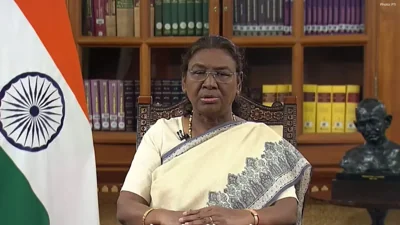
President Murmu Endorses SHANTI Bill to Propel Nuclear Energy Expansion
President Droupadi Murmu endorses the SHANTI Bill, facilitating private sector involvement in nuclea

New Zealand Claims Test Series with Decisive Victory Over West Indies
New Zealand triumphed over West Indies by 323 runs in the final Test, securing a 2-0 series win with
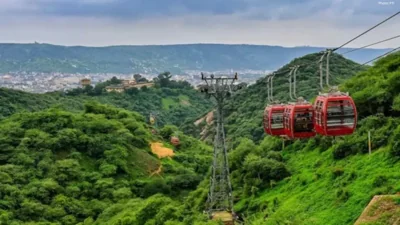
Centre Affirms Protection for Aravalli Hills Amidst Mining Concerns
Government asserts over 90% of Aravalli hills remain protected, dismissing mining concerns as misinf